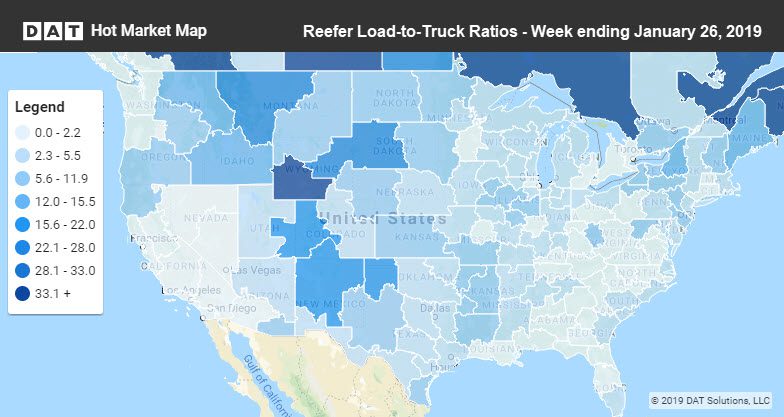Expect a rush of reefer demand this week in areas hit by sub-zero temperatures, as shippers attempt to prevent sensitive cargo from freezing. If you don’t want to drive into that slippery mess, head for someplace warm and load up on fresh produce until the storm passes. Rates are cooling off for refrigerated freight across most of the country, but a few hot spots still remain.
The hot market in the Western region is Twin Falls, ID. It was number-one for reefer load posts last week. Don’t even bother going to California right now. The whole state is quiet, and you could have trouble finding a decent load out of there.

Apart from Idaho, most of the seasonal action is in imports. In the Northeast, there’s a lot of action in the Philadelphia market, where produce arrives from South America. Ditto Elizabeth, NJ, home of the largest seaport on the East Coast. Both those markets are expecting typical winter weather this week, and maybe a little snow, but nothing extraordinary.
McAllen, Texas is an even bigger produce market than Elizabeth or Philly, thanks to the fertile Rio Grande Valley with farms and orchards on both sides of the border. Food processing plants and cold storage facilities abound in the McAllen market, which includes nearby Pharr and Brownsville.
The outbound load-to-truck ratio was above 10-to-1 there last week, which is almost twice the national average. That additional demand drove rates up to $2.93 per mile on the lane from McAllen to Dallas, a 12¢ boost compared to the December average. Rates rose 11¢ from McAllen to Chicago, but the lane to Northern New Jersey lost traction. McAllen to Atlanta prices also slipped, but that lane may pick up this week in the run-up to Super Bowl Sunday.
Find loads, trucks and lane-by-lane rate information in DAT load boards, including rates from DAT RateView.


